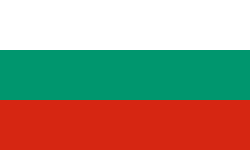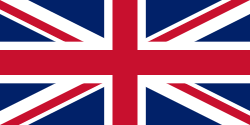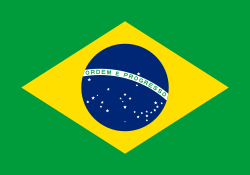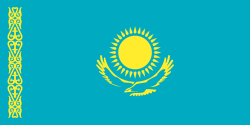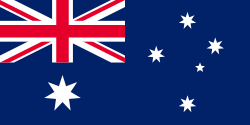US Open 2018 – čtyřhra juniorů
| US Open 2018 | |
|---|---|
| Vítězové | |
| Finalisté | |
| Výsledek | 6–4, 2–6, [10–8] |
| Soutěže | |
| mužská dvouhra (q) • mužská čtyřhra | |
| ženská dvouhra (q) • ženská čtyřhra | |
| smíšená čtyřhra | |
| dvouhra juniorů • čtyřhra juniorů | |
| dvouhra juniorek • čtyřhra juniorek | |
| US Open čtyřhra juniorů | |
| 2017 ◄◄ 2018 ►► 2019 | |
| Grand Slam 2018 čtyřhra juniorů | |
| Australian Open • French Open Wimbledon • US Open | |
Čtyřhra juiorů US Open 2018 probíhala v první polovině září 2018. Do deblové soutěže newyorského tenisového grandslamu nastoupilo třicet dva párů. Obhájcem titulu byla tchajwansko-čínská dvojice Hsu Yu-hsiou a Wu I-ping,[1] jejíž členové nebyli věkově způsobilí do soutěže zasáhnout.
Vítězem juniorské čtyřhry se stal nenasazený pár, složený ze 17letého Bulhara Adriana Andrejeva a Brita téhož věku Antona Matuseviche, který ve finále zdolal americké juniory Emilia Navu s Axelen Nefvem, když o vítězích rozhodl až supertiebreak nejtěsnějším dvoubodovým rozdílem. Oba šampioni vybojovali premiérové grandslamové tituly. Andrejev se stal druhým bulharským vítězem juniorky na US Open a navázal na triumf Grigora Dimitrova z dvouhry 2008.[2] Každý si do juniorského kombinovaného žebříčku ITF připsal 270 bodů.
Nasazené páry
 Thiago Seyboth Wild /
Thiago Seyboth Wild /  Tseng Chun-hsin (1. kolo)
Tseng Chun-hsin (1. kolo) Sebastián Báez /
Sebastián Báez /  Facundo Díaz Acosta (1. kolo)
Facundo Díaz Acosta (1. kolo) Hugo Gaston /
Hugo Gaston /  Clément Tabur (2. kolo)
Clément Tabur (2. kolo) Aidan McHugh /
Aidan McHugh /  Timofej Skatov (1. kolo)
Timofej Skatov (1. kolo) Carlos López Montagud /
Carlos López Montagud /  Mu Tchao (1. kolo)
Mu Tchao (1. kolo) Tristan Boyer /
Tristan Boyer /  Nick Hardt (2. kolo)
Nick Hardt (2. kolo) Ondřej Štyler /
Ondřej Štyler /  Naoki Tadžima (1. kolo)
Naoki Tadžima (1. kolo) Filip Cristian Jianu /
Filip Cristian Jianu /  Deney Wassermann (čtvrtfinále)
Deney Wassermann (čtvrtfinále)
Pavouk
| Legenda | ||
|
|
|
Finálová fáze
| Semifinále | Finále | |||||||||||
| | 6 | 5 | [6] | |||||||||
| | 4 | 7 | [10] | |||||||||
| | 6 | 2 | [10] | |||||||||
| | 4 | 6 | [8] | |||||||||
| | 6 | 4 | [10] | |||||||||
| | 3 | 6 | [12] | |||||||||
Horní polovina
Dolní polovina
Odkazy
Reference
V tomto článku byl použit překlad textu z článku 2018 US Open – Boys' Doubles na anglické Wikipedii.
- ↑ Taiwan's Hsu Yu-hsiou wins junior boys' doubles at U.S. Open [online]. Focus Taiwan, 2017-09-10 [cit. 2017-10-05]. Dostupné online. (anglicky)
- ↑ A Bulgarian Became the US Open Champion in the Junior Doubles [online]. EUSCOOP [cit. 2018-09-12]. Dostupné online. (anglicky)[nedostupný zdroj]
Externí odkazy
- Čtyřhra juniorů US Open 2018 [PDF]. US Open [cit. 2018-09-12]. Dostupné v archivu pořízeném dne 2018-09-06. (anglicky)
Média použitá na této stránce
Chinese Taipei Olympic Flag. According to the official website of Chinese Taipei Olympic Committee, Blue Sky(circle) & White Sun(triangles) above the Olympic rings is neither the National Emblem of the Republic of China, nor the Party Emblem of Kuomintang (KMT), but a design in between, where the triangles do not extend to the edge of the blue circle, as registered at International Olympic Committee in 1981 and digitally rendered in 2013. Besides, the blue outline of the five-petaled plum blossom is broader than the red one. Moreover, the CMYK code of the blue one and the Blue Sky & White Sun is "C100-M100-Y0-K0", and different from the Olympic rings (C100-M25-Y0-K0). Note that it's the only version recognized by IOC.
Chinese Taipei Olympic Flag. According to the official website of Chinese Taipei Olympic Committee, Blue Sky(circle) & White Sun(triangles) above the Olympic rings is neither the National Emblem of the Republic of China, nor the Party Emblem of Kuomintang (KMT), but a design in between, where the triangles do not extend to the edge of the blue circle, as registered at International Olympic Committee in 1981 and digitally rendered in 2013. Besides, the blue outline of the five-petaled plum blossom is broader than the red one. Moreover, the CMYK code of the blue one and the Blue Sky & White Sun is "C100-M100-Y0-K0", and different from the Olympic rings (C100-M25-Y0-K0). Note that it's the only version recognized by IOC.
The flag of the Dominican Republic has a centered white cross that extends to the edges. This emblem is similar to the flag design and shows a bible, a cross of gold and 6 Dominican flags. There are branches of olive and palm around the shield and above on the ribbon is the motto "Dios,Patria!, Libertad" ("God, Country, Freedom") and to amiable freedom. The blue is said to stand for liberty, red for the fire and blood of the independence struggle and the white cross symbolized that God has not forgotten his people. "Republica Dominicana". The Dominican flag was designed by Juan Pablo Duarte, father of the national Independence of Dominican Republic. The first dominican flag was sewn by a young lady named Concepción Bona, who lived across the street of El Baluarte, monument where the patriots gathered to fight for the independence, the night of February 27th, 1844. Concepción Bona was helped by her first cousin María de Jesús Pina.
The flag of the Dominican Republic has a centered white cross that extends to the edges. This emblem is similar to the flag design and shows a bible, a cross of gold and 6 Dominican flags. There are branches of olive and palm around the shield and above on the ribbon is the motto "Dios,Patria!, Libertad" ("God, Country, Freedom") and to amiable freedom. The blue is said to stand for liberty, red for the fire and blood of the independence struggle and the white cross symbolized that God has not forgotten his people. "Republica Dominicana". The Dominican flag was designed by Juan Pablo Duarte, father of the national Independence of Dominican Republic. The first dominican flag was sewn by a young lady named Concepción Bona, who lived across the street of El Baluarte, monument where the patriots gathered to fight for the independence, the night of February 27th, 1844. Concepción Bona was helped by her first cousin María de Jesús Pina.
Vlajka České republiky. Podoba státní vlajky České republiky je definována zákonem České národní rady č. 3/1993 Sb., o státních symbolech České republiky, přijatým 17. prosince 1992 a který nabyl účinnosti 1. ledna 1993, kdy rozdělením České a Slovenské Federativní republiky vznikla samostatná Česká republika. Vlajka je popsána v § 4 takto: „Státní vlajka České republiky se skládá z horního pruhu bílého a dolního pruhu červeného, mezi něž je vsunut žerďový modrý klín do poloviny délky vlajky. Poměr šířky k její délce je 2 : 3.“
Flag of Australia, when congruence with this colour chart is required (i.e. when a "less bright" version is needed).
See Flag of Australia.svg for main file information.Finská vlajka
This is the national flag of Belgium, according to the Official Guide to Belgian Protocol. It has a 13:15 aspect ratio, though it is rarely seen in this ratio.
Its colours are defined as Pantone black, Pantone yellow 115, and Pantone red 032; also given as CMYK 0,0,0,100; 0,8.5,79,0; and 0,94,87,0.Used color: National flag | South African Government and Pantone Color Picker
| zelená | rendered as RGB 0 119 73 | Pantone 3415 C |
| žlutá | rendered as RGB 255 184 28 | Pantone 1235 C |
| červená | rendered as RGB 224 60 49 | Pantone 179 C |
| modrá | rendered as RGB 0 20 137 | Pantone Reflex Blue C |
| bílá | rendered as RGB 255 255 255 | |
| černá | rendered as RGB 0 0 0 |
